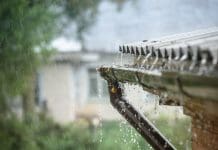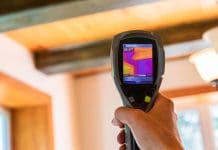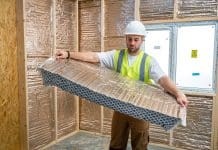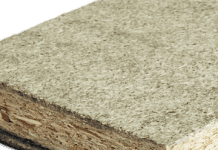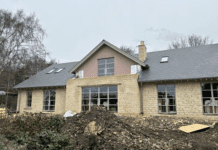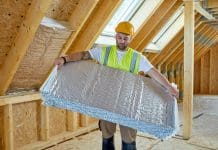The use of full-fill cavity wall insulation in areas of very severe exposure to wind-driven rain requires a professional approach as explained by Knauf Insulation
The exposure of any site or building to wind-driven rain is dependent on its geographical location and various site-specific factors. Due to some rain penetration problems in parts of the UK in the 1980’s, the National House-Building Council (NHBC) introduced conditions on the use of full-fill cavity insulation in areas of high exposure to wind-driven rain. Similar restrictions were also introduced into Approved Document C of the Building Regulations.
At this time both Approved Document C and the NHBC introduced rules to address this, which would not permit the use of full-fill cavity wall insulation in areas of very severe exposure to wind-driven rain where fair-faced masonry is used for the outer leaf. The rules also reflected the reduced risk where impermeable and rendered outer leaf constructions were used and permitted the use of full-fill insulation.
When these rules came into effect, the standard cavity width between the inner and outer leaf of masonry was significantly narrower than it is today (often just 50mm). Energy efficiency standards have progressively improved and cavity widths increased in order to accommodate greater thicknesses of insulation. It is now more common to see cavities wider than 100mm in both new homes and extensions.
It is widely recognised that as cavity widths increase the likelihood of rain penetration diminishes.
The rules in Approved Document C have changed to reflect the alterations and in the current edition it is permissible to build with full-fill insulation behind fair-faced masonry, providing the cavity is a minimum of 150mm wide. This is not the case with NHBC standards though where the restriction on full-fill remains.
For clarity, the requirements discussed above are summarised in the table below1. It should be noted that recessed jointing on masonry flush cills and copings are not permitted in very severe exposure zones. Similarly, all other aspects of good practice concerning rain resistance and masonry cavity walls should be respected.
Full-fill mineral wool insulation solutions are the most commonly used in new build housing, where they are used in approximately 55% of dwellings built with masonry cavity walls. This is because they offer highly cost effective solutions to the requirements of the latest thermal building regulations.
Indeed, whilst there are differing requirements for new build walls both for the type of work, new dwellings or extensions to existing dwellings, and the country, (with different requirements in England, Wales and Scotland), full-fill mineral wool solutions for masonry cavity walls are both technically and commercially attractive.
From Table 1, it is clear that Earthwool DriTherm® full-fill is also a valid option for masonry cavity walls in very severe exposure zones. Whilst of course, if a warranty is required, the requirements of the provider must be respected, there is often the opportunity to use a full-fill solution.
Additionally, Earthwool DriTherm is easy to install being highly fit tolerant, easy to cut and fit around features in the cavity wall. It also does not require special clips to tie it back to the inner leaf as a partial fill alternative would. In fact, the tight fit of a masonry cavity wall insulation to the inner leaf is critical to achieving the intended thermal performance as heat can bypass around insulation where this is not achieved.
So our message is simple; whilst it is still very common to default to partial fill insulation in very severe exposure zones, it’s important not to rule out full-fill insulation for masonry cavity walls before all the factors and conditions have been fully assessed. ■
1 As applies in England and Wales
. . . . . . . . . . . . . . . . . . . . . . . . . . . . . . . . . . . . . . . . . . . . . . .
Knauf Insulation
Tel: 01744 76 66 66
technical.uk@knaufinsulation.com







